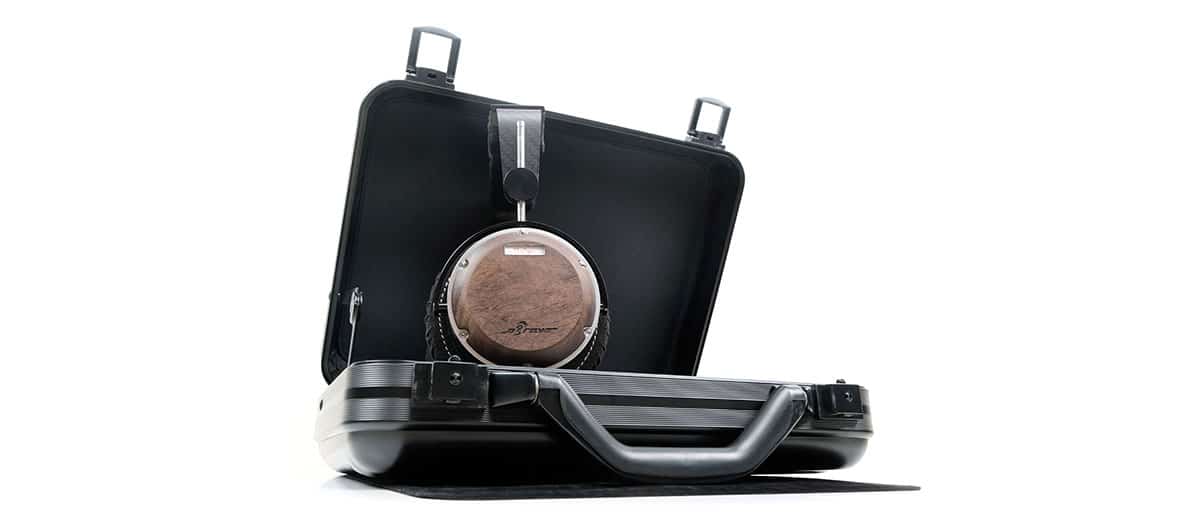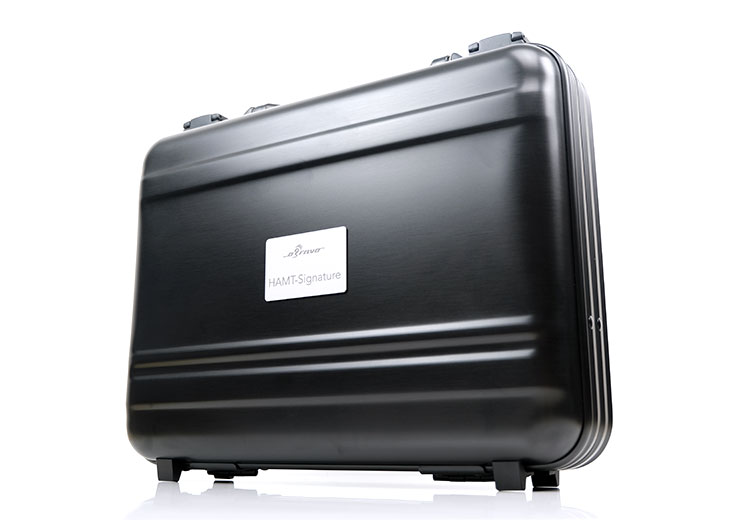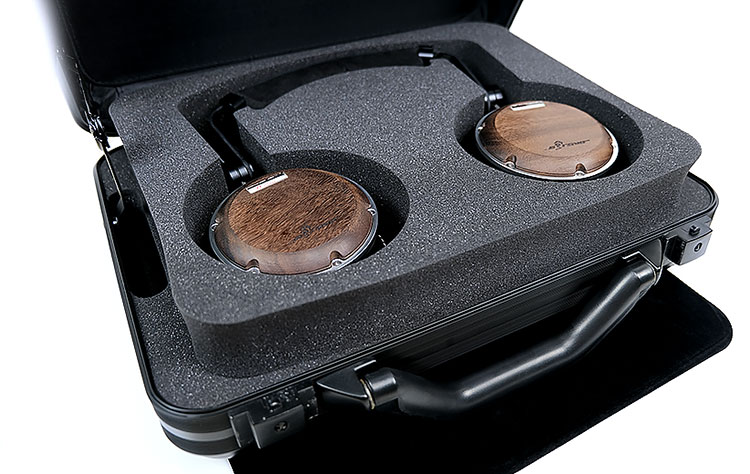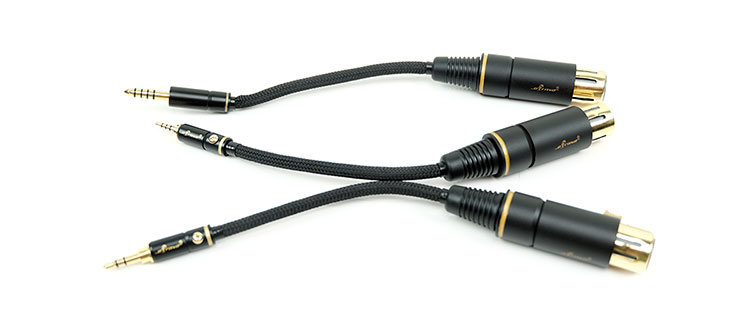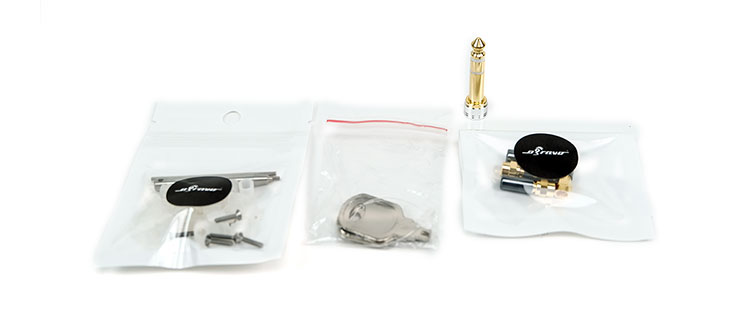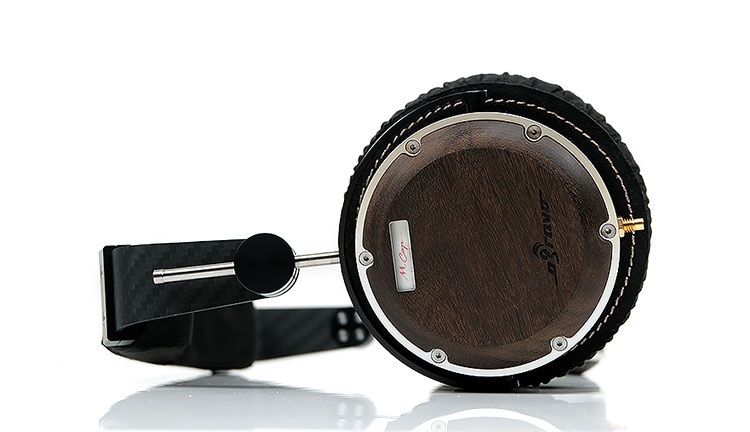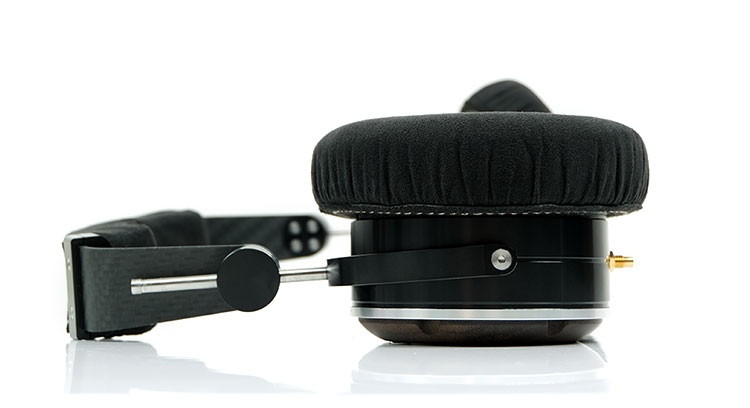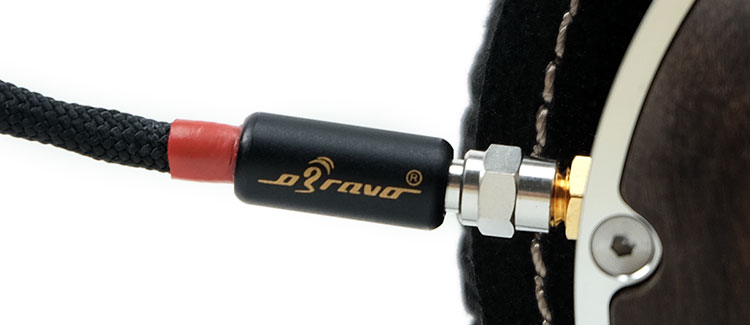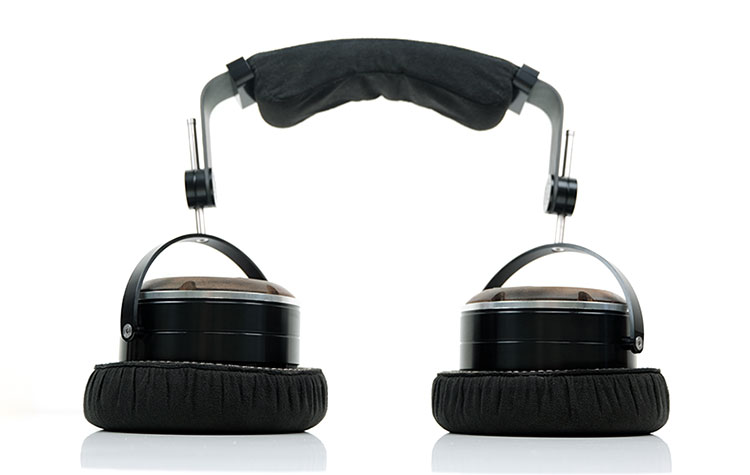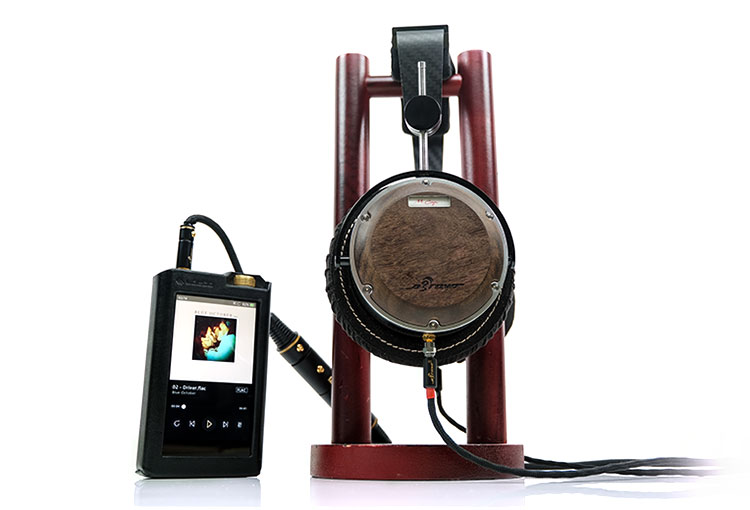This is an independent review of the oBravo HAMT-1 Signature which is the company’s flagship dynamic and AMT driver headphones. It is priced at around £5899.
Disclaimer: This is a sample in exchange for our honest opinion. Headfonics is an independent website with no affiliate links. We thank oBravo and Audio Concierge for this opportunity.
To read more about oBravo products we have previously featured on Headfonics click here.
We have covered a lot of oBravo IEMs in the past few years with various degrees of criticism and praise. From the $10k Ra C-Cu down to the £249 ERIB-7. We will have a review of the Cupid out shortly which is even cheaper.
oBravo does cover a lot of price points for their gear and is known almost as much for that as their unique fusion of dynamic, planar, and AMT drivers in many of their builds.
However, this is the first time we have covered their headphones, and true to form they have two models with us that have a large gap in pricing.
The first one is their TOTL HAMT-1 Signature costing a tasty £5899 which is right up there with my all-time favorite headphones, the Susvara from Hifiman. So no pressure there then. The other one, in tomorrow’s article, will be their closed-back HAMT-3 MKII headphones that chime in at a more affordable £795.00.
Tech Inside
Hybrid
Like their IEMs, the HAMT-1 Signature is a hybrid semi-open headphone featuring a single 57mm dynamic driver and fairly hefty 40mm AMT tweeter. I am presuming there is a single crossover in there somewhere and my guess is around the 7-8k marker based on their IEM tuning and how the AMT tweeter is deployed in there.
The AMT driver is the MK1 version which is the same version as their EAMT series drivers only on a much larger scale. The HAMT-1 Signature also uses a neodymium dynamic driver (NDD) also which is not surprising knowing how much David of oBravo enjoys working with drivers of this type in the EAMT monitor range.
This is not the first multi-driver headphone I have worked with, however. We have reviewed Crosszone CZ-1, listened to Ultrasone’s new Edition 11 and do have Final’s Hope Pandora IV in the display rack.
Probably the closest in a design application is the MJ2 from the now wound-up UK firm, Johnson & Johnson. This was a 40mm dynamic also but with an electret tweeter, much smaller in size and an entirely closed-back design. However, AMT is a whole new ball game and as a technology in its own right, a far more expensive process to produce tweeters from it.
AMT
oBravo is pitching what they call an Air Motion Transformer design as the bedrock of this headphone’s high-frequency performance. This, however, is not oBravo in-house technology, or at least the fundamental principle behind it is not theirs. AMT technology first found its way into speaker design back in the 1970s, the most high-profile of which was the AMT1 speaker by ESS.
AMT is an electroacoustic transducer, unlike traditional planar ribbon designs. In contrast to a planar ribbon, the diaphragm of an AMT is of a pleated shape similar to a bellows design, (think of an airbag). Unlike conventional diaphragms, AMT diaphragms are made of mylar ribbon, bonded with conductive aluminum strips.
Moving Air Faster
They are designed in such a way to have a much lower mass than conventional diaphragm with a much smaller surface area, by up to 80% over traditional speaker designs. This mylar ribbon diaphragm is then suspended within a dipole magnetic field creating a very tight and tense pressure environment.
That basically means when a signal is passed through the folded pleats of the mylar ribbon design it moves air a heck of a lot faster than conventional designs, up to 5 times faster. As such AMT is perfect for exacting or demanding treble performance where conventional designs might struggle to keep up with complex high-frequency reproduction.
Unboxing
Think Empyrean but only a bit more compact and perhaps a bit more premium in the finish and you have the retail package of the oBravo HAMT-1 Signature. I do love the case they are using here.
It’s weather-sealed, aluminum, a nice size with a strong handle. You can carry this around with no issues and it will not take up a huge amount of space. It also feels solid and can take a hit or two also.
Inside the headphones, cable and accessories are all very nicely protected with a double foam layer, one of which comes away to reveal all the cubby holes and the headphones themselves. YOU get a lovely satin cloth on top for good measure to help keep everything clean after daily use.
Accessories
Now there is some very nice value in here indeed. Apart from a fairly nice-looking balanced 4-pin stock cable and a 1/4 adapter you also get some pig-tail converters which are an absolute godsend. Not just for the HAMT-1 Signature but for any balanced headphone cable you are using, (subject to wire OCD).
They are beautifully finished with an all-black gold branded paint and nylon jacket build. Combined with the 1/4 adapter you can pretty much fit the HAMT-1 Signature to just about any output port, be it DAP or desktop amp, balanced or unbalanced.
Tuning Plugs
Now the little bag of screws and plugs as well as what looks like a set of lock keys have a very specific purpose and one which I will assess in more detail in the main review. The HAMT-1 Signature is a tunable headphone.
What that means is that it has 3 holes inside the cups that can be fitted with those supplied white plastic plugs. They basically control the level of air flowing through the HAMT-1 Signature and that means a lot of tweaking for bass and staging.
The stock configuration uses no filters with 1 port semi-open (there are 3 on each side). The rest of the ports are open. You can then add or subtract on both sides until you find a mix of port openings that produce the quality of sound you prefer the most.
Aside from that, you receive some replacement coaxial connectors in case the supplied ones break and you are confident enough on how to replace them to avoid having to send them back for repair.
Design
The HAMT-1 Signature looks beautiful out of the box. This is a stunning mixture of soft breathable Alcantara pads and headband wraps, deep wood grain cups, carbon fiber headbands, and an aluminum enclosure.
The form factor is more Abyss than Audeze so it will add that cyberman look when wearing but that is forgivable given its premium looks. There is absolutely nothing iffy in the build quality of the Signature and with plenty of deep-set screws, it does feel like it will last a very long time indeed.
For those that are wondering what that little white strip is on the top of the cups, well, that’s a window. Inside that window, you can see the high-end Mundorf Caps used to power the AMT tweeters. One of the major upgrades on the caps used in the original HAMT-1 series of headphones from a few years ago.
Cable & Connectors
Stock Cable
The HAMT-1 Signature stock cable is relatively short at 1.2m as opposed to the usual desktop 3m cut. However, it is a lovely finish with low microphonics and no memory retention. I suspect this is a 22AWG SPC wire of some sort given its relative thickness but I will confirm in the main review the exact geometry of the cable.
It is not the lightest of cables but of acceptable drag for a desktop solution. The majority of the weight is in those black coated and oBravo branded XLR 4-pin plugs with indestructible strain relief and the more svelte black splitter and connector barrels. All seem barrels seem to be made of good quality aluminum with an anodized black coating.
Adapters
Love it, just love it, honest how little things like this can make such a difference. I have been complaining to myself it was about time I got some XLR to balanced 2.5mm/4.4mm adapters a few months ago to properly test headphones on balanced outputs.
So, along comes oBravo with the full set of pigtails 3.5mm, 2.5mm TRRS, and 4.4mm all finished with the same wire and paint as the main cable. That pretty much covers everything out there and importantly, allows a degree of transportability to the HAMT-1 Signature.
Connectors
The HAMT-1 Signature uses a set of high-end Taiwanese-made coaxial connectors that are directional agnostic. That means the direction is determined by the L/R on the cable itself and to that end, oBravo has helpfully made sure that the right channel has a clear red marking.
Now I am no fan of coaxial connectors and I did groan as soon as I saw them out of the box. However, I am prepared to say that my experience has been blinded by the recessed lower-quality coaxial connectors used once by Hifiman which were a nightmare. These are not.
First, they are not recessed making it really easy to thread. Second, the threading screw is immaculate in locking meaning no chance of cable twisting and broken internal wiring. These are much better connectors.
My only caveat is that they have no quick-release mechanism like a 3.5mm socket so if you step on the cable and lift the headphones by accident you could damage the cable or even the socket depending on the force.
Fitting
The HAMT-1 Signature form factor is very much in the Abyss “square” camp rather than a traditional rounded headphone. My initial impression is more of a side than vertical pressure with a decent clamp that is offset by the plush and relatively deep Alcantara pads.
The carbon fiber headband is quite light actually though not Nitinol light. It does allow copious amounts of memory form wrapped in Alcantara for support in the middle of the band and it is super comfy as a result. I can’t feel any real pressure points except on the front and top of my ears due to the clamp. Dissipation for a relatively heavy 540g headphone is very good.
Because it is semi-open and uses porous pads, the isolation of the HAMT-1 Signature is fairly average so do not expect great passive background noise blocking. Articulation is excellent on the gimbals with a 3way 180-degree tilt and swing that should adapt to most heads out there.
Sound Impressions
(Tested with a Lotoo PAW Gold Touch, Dethonray DTR1, and an Auris Audio HA-2SE with a Chord Qutest DAC and Hugo M Scaler digital upsampling desktop setup).
The HAMT-1 Signature impressions are with the stock filter and plug setup. Subsequent filter and plug combinations will be tested in the main review to come soon after.
The tuning is nothing like the original HAMT-1, (aural memory and measurements). This is a more balanced and mature tuning but one that still strays to the musical side of the spectrum with an emphasized sub-to-mid bass presentation.
This is complemented with a touch of lower-mids warmth and a forward 2-4k upper mids though not something that you could say was overly pushed. Mids around 1k have a bit of dip with vocals here lacking a little power and focus.
Otherwise, the HAMT-1 Signature timbre is reasonably natural sounding but it does not have that lightning fast response and separation of its 6k competitor, the Susvara.
The lower treble is a little on the relaxed side before it gets lift-off from 7-10k (and onwards). I suspect this is the crossover point from the limits of the dynamic driver and into the energetic AMT driver.
The AMT driver also sounds slightly more natural to my ear than the RA C-Cu AMT II which is very peppy and articulate but quite hard to match with. The HAMT-1 Signature seems a little smoother and easier to match to my ear.
Right now, the stock staging depth is very good but with a very typical dynamic driver-type sound. oBravo’s treble tuning using the AMT is both natural and very articulate with plenty of detail and the HAMT-1 Signature is all the better for it. There is very little harshness despite those pushed upper mids.
Our Verdict
With the right source, the oBravo HAMT-1 Signature can scale with more power. However, a quality source will maximize its potential. Units such as the TT2 and the M Scaler is perhaps the best source combo that I tried for this pairing.
The other key focus points are those filters and plug combinations. Try to flatten the bass a touch and take some of that low-end warmth out to see what happens to the mids timbre and general level of perceived instrumental separation. A bit of DSP and PMEQ from the likes of the LPGT and the DX220 with AMP 8 can bring some balance to the lower treble also.
Otherwise, the days of those odd-ball measurements of the original HMAT-1 are well behind them. The Signature Edition is a marked step up in both tuning and design quality. Does it have what it takes to outgun the Empyrean, Diana Phi, and Susvara? Not quite, but it is by no means leagues behind.
oBravo HAMT-1 Signature Specifications
- AMT Tweeter: 40mm
- Dynamic Driver: 57 mm
- Frequency Response:15Hz~34KHz
- Impedance: 56 Ω
- Sensitivity : 105dB

